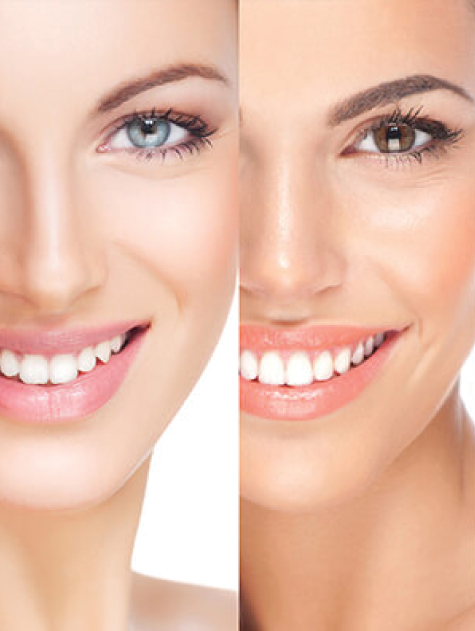Digital Computerized Dentistry
Digital dentistry involves the use of dental technology or devices which use computer-based or digital components. Traditional dental mediums, on the other hand, use mechanical or electrical procedures.
Computer-based technology enables dental practices to further enhance patient care. Above all, digital dentistry eliminates manual steps of dental procedures. For this reason, your Dentist in Vienna Dr.Azzawi can provide an efficient and more automated treatment process.
Types of digital dentistry technology
In our dental practice, there are a variety of diagnostic and treatment techniques which require the use of computer-controlled technology.
Some common types of dental technology used at Azzawi Dental Aesthetic are:
Digital radiography
Digital radiography is the use of optical face scanners to produce a clear map of teeth and dental impressions. These scans can be viewed, printed or assessed by the dentist while you are in the chair.
In addition, digital radiographs emit up to 70 percent less radiation than traditional X-rays and are more environmentally friendly. At Azzawi Dental Aestthetic use 3D intra-oral scanner 3Shape TRIOS.
Cone-beam computed tomography imaging (CBCT)
A Cone-beam CT is a rotating X-ray machine which provides a three-dimensional view of teeth and the oral anatomy. Additionally, this imaging technique identifies oral conditions which are not detectable by regular X-ray screenings. A CBCT can also determine the exact position of teeth and their roots and in this way we can find the exact position of pain.
Intra-oral cameras/Scanner
Intra-oral cameras allow dental practitioners to see clear, accurate images of the mouth. Shaped like a wand, the camera can magnify images on a computer screen in real time. This enables patients to clearly see what the dentist is doing or referring to. In addition, the intra-oral camera can provide a detailed view of hard to see areas in the mouth. This helps to accurately identify problems such as a fractured tooth.
Computer aided design or computer aided manufacturing (CAD/CAM) and 3D printing
Computer aided design and 3D printing have made it more efficient for practitioners to design and manufacture dental restorations. Such restorations may include porcelain crowns, bridges, or veneers.
Computer aided dentistry allows dentists to design, fabricate and insert dental restorations on the same day. Traditionally, a dental laboratory would make the restoration. This process could take up to 2 weeks. The new technology, however, means that the patient can receive the final restoration within a day.
Dr.Azzawi also use CEREC technology and offer same-day crowns.
What can we do with Digital dentistry with our Cad Cam System .
Almost can we make all kinds of Dentistry treatments for example :
Inlay, Onlay , Overlay, Endocrown, Veneers , Implants Crowns, Bridges , Prosthetic Parts of Implants .
Benefits of digital dentistry
The development of new technologies and techniques in dentistry offer a variety of advantages for patients. This includes:
Accurate condition diagnoses
Dentists can use digital dentistry techniques to accurately identify, diagnose and treat oral diseases in its early stages. Unlike traditional x-ray images, digital radiography images and CBCT X-rays can be enlarged. For this reason, they can display an accurate representation of a patient’s teeth and oral anatomy.
Reduce time and costs
Instead of waiting days for a laboratory to create a restoration, a practitioner can have it ready on the same day. Therefore, the team can eliminate further appointments saving time and money. Furthermore, digital images are immediately available for labs and insurance providers. As well, patients do not have to wait for the images and can easily view them on the screen.
Enhanced patient experience
Digital imaging has also enabled our dentists to reduce the usage of traditional impression material which many patients find uncomfortable. Instead of taking impressions, your dentist can now easily scan your teeth with a 3D scanner. This means, you won’t have to bite into impression material or have trays inserted into your mouth. Overall, many patients find the use of the 3D scanner much more comfortable.
Improved communication
Digital imaging also allows our dentists to collaborate with other specialists and dental laboratories. This even can happen while the patient is still in the practice. Additionally, 3D teeth impressions can be sent off for instant feedback on procedures and planned restorations.
Book an appointment today
What to learn more? Ask your dentist about digital dentistry at your next appointment.
